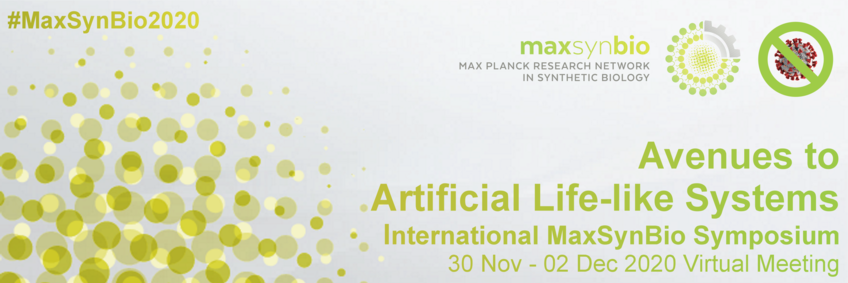
#09 - Light-powered reactivation of flagella: towards building an artificial cell
Azam Gholami (MPI for Dynamics and Self-Organization, Göttingen)
Monday, 30 Nov 21:15 - 22:00 CET
Access to the BigBlueButton rooom for this Mini Talk via the lists for Monday and Tuesday.
Please make yourself familiar with BigBlueButton before you join the Mini Talk - read the instructions.
Abstract
Title: Light-powered reactivation of flagella: towards building an artificial cell
Author(s): Azam Gholamia
Affiliation(s): aMPI for Dynamics and Self-Organization, Göttingen
Abstract: Artificial systems capable of self-sustained movement with self-sufficient energy are of high interest with respect to development of many challenging applications including medical treatments but also technical applications. The bottom-up assembly of such systems in the context of synthetic biology is still a challenging task. This paper demonstrates biocompatibility and efficiency of an artificial light-driven energy module and a motility functional unit by integration of light-switchable photosynthetic vesicles with demembranated flagella, thereby supplying ATP for dynein molecular motors upon illumination. Flagellar propulsion is coupled to its beating frequency and light- driven dynamic synthesis of ATP allows for controlling beating frequency of flagella as a function of illumination. This integrated system has potential biomedical applications in the subject of targeted drug delivery. Further, we verified the functionality of light- powered sythetic vesicles in in vitro motility assays by encapsulation of microtubules assembled with force-generating kinesin-1 motors and energy module to investigate dynamics of a contractile filamentous network by optical stimulation. Integration of this photosynthetic system with different biological building blocks such as cytoskeletal filaments and molecular motors may contribute to the bottom-up synthesis of artificial cells that are able to undergo motor-driven morphological deformations and exhibit directional motion in a light-controllable fashion.